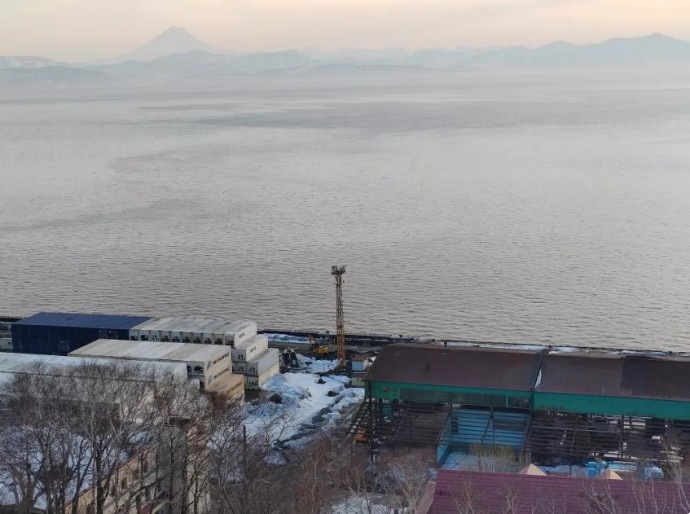In April, the waters of the Avacha Bay in Petropavlovsk-Kamchatsky, as during previous incidents, acquired an ominous purple-crimson hue, signaling a possible problem in the marine environment. Confirmation of this disturbing phenomenon comes from the Kamchatka branch of the Pacific Institute of Geography of the Far Eastern Branch of the Russian Academy of Sciences.

The institute’s specialists inform that a visual change in the color of the water, noticeable to the naked eye, was recorded on April 12. The observation was conducted in the northeastern part of the bay area, which once again found itself at the epicenter of this natural phenomenon, reminiscent of the fragility and vulnerability of the marine ecosystem.
An operational study of water samples conducted by scientists sheds light on the immediate cause of the incident. The results of the analysis show that the observed “red tide” is caused by the intense spring flowering of the marine ciliate species Mesodinium rubrum, also known by the synonym Myrionecta rubra. Its concentration in the surface water layer reached extremely high, abnormal values – 452 thousand cells per liter.
Scientists explain that, according to accumulated scientific data, the Myrionecta rubra infusoria itself is not capable of synthesizing toxins, that is, it is a non-toxic species. It does not pose a direct threat of poisoning to marine life or humans.
However, the institute’s experts strongly warn against underestimating the situation. They emphasize that such a rapid, explosive reproduction of even a non–toxic organism is a serious imbalance that can have far-reaching negative consequences for the entire ecosystem of the bay. The fact is that the infusoria Myrionecta rubra serves as an important link in the food chain, being a food for larger representatives of zooplankton. Its massive development creates the prerequisites for the subsequent “flowering” of other types of microorganisms that feed on this ciliate or its decay products. Among them, there may well be toxic species of microalgae, whose flowering already poses a real danger. Thus, the current “red tide” can only be a harbinger of more serious environmental problems in the Avacha Bay, requiring increased attention and monitoring.